It’s been nearly three decades since I signed up for my first college photography class, and I am only now beginning to realize how lucky I was to start out with a Pentax KX. Most people will say their first camera is their favorite, or at least their most memorable, just like their first car, first kiss, first apartment. The KX is the camera I grew up with, and of course its first-ness impacts my opinion.
But yes, I was lucky to have it.
Luck really is a factor here: The KX was my grandfather’s camera, though I didn’t pick it up until two years after he died. In my sophomore year of college (or was I a junior?), I signed up for Photo 101. I drove home to New Rochelle, New York, went down to Grandma’s basement—with permission, of course—and plucked out my grandfather’s cameras. They could have been anything—Canons, Nikons, Minoltas; actually, I’m a bit surprised they weren’t Nikons—but they were Pentaxes, a KX and an MG, the latter a compact aperture-priority automatic SLR. My teacher wanted us to use manual cameras, so the KX was the one I lugged upstate to Rochester and to my first class.
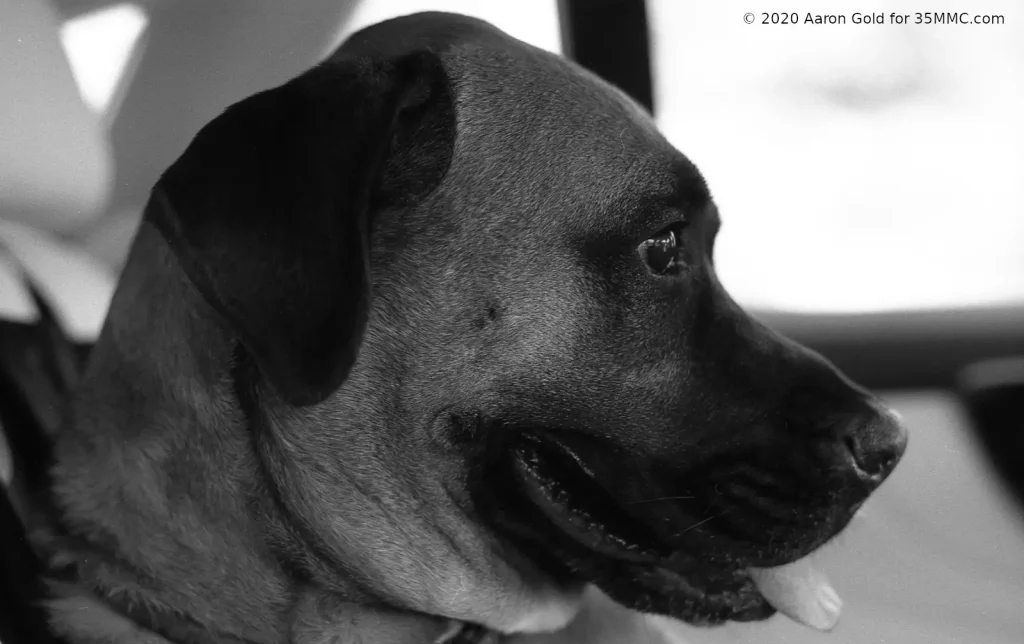
Back then, we used to refer to the Pentax K1000 as the Volkswagen Beetle of cameras, and if that was the case, I told my friends, the KX was a Rabbit (Golf to you Europeans) with power steering and air conditioning. The KX is essentially the same basic camera as the K1000 with a bunch of extra goodies: Match-needle metering, depth-of-field preview, a mirror lock-up, a self-timer, and way to turn off the meter other than putting on the lens cap.
The Pentax KX is an all-mechanical camera, and that is one of its delights—not that I would realize just how delightful it was until many years and many cameras later. When you release the shutter, the KX makes a satisfying KA-CHACK. Set the shutter speed to a quarter-second or longer and you can hear the buzz of the clockwork delaying the second curtain. To this day, I can’t get used to electric cameras that go BZZZT. That’s not the sound photographs are supposed to make.
The winder pull, I would later learn, isn’t as short as a Minolta’s or as smooth as a Nikon’s, but the sensation you get through your thumb, of gears meshing and springs being pulled into tension, is nothing short of enchanting.
Of course, back in the early ‘90s, I didn’t realize how fortunate I was to have a mechanical SLR. Once I took the camera to a ski trip in Vermont. The cold killed the batteries and the meter stopped working. It never occurred to me that with some other SLRs, dead batteries meant a dead camera.
I never realized how robust mechanical cameras are. At the time I started using it, the KX was 16 years old and I figured I should probably get it cleaned, but I couldn’t afford to. Now the KX is 45 years old and it still hasn’t been cleaned, and when I picked it up in fall 2019—after a digital hiatus of nearly twenty years—it still worked just fine. (I can afford to get it cleaned now, but I’m afraid it won’t feel the same.)
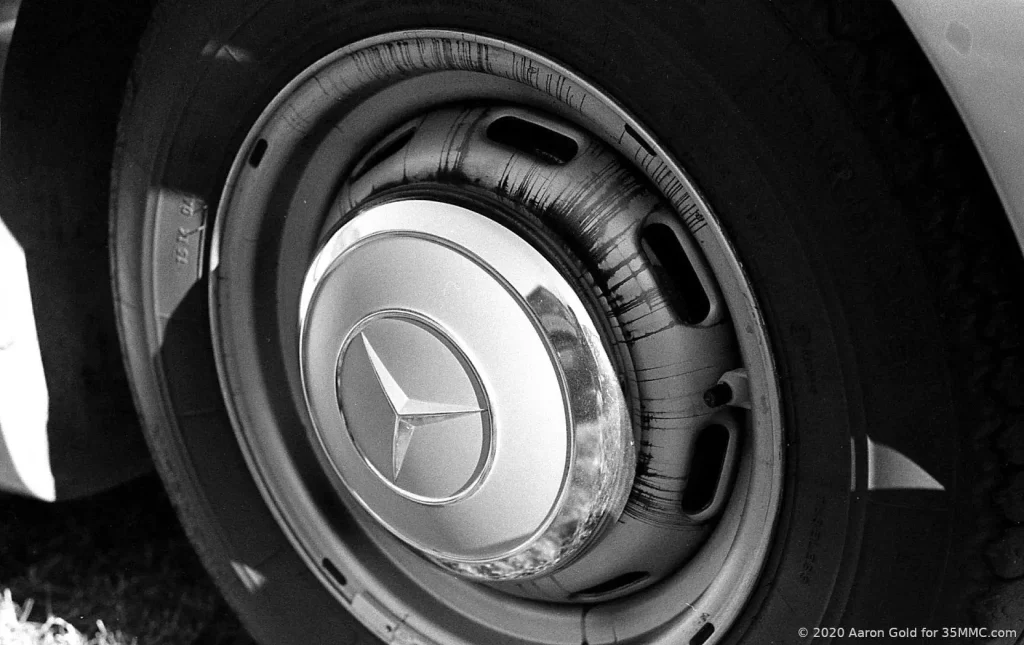
I never realized how the depth-of-field preview helped to teach me the effect of aperture on my shots, and without having to process my film—I just pressed the button and saw exactly what the teacher was talking about. I could never figure out why others couldn’t figure out the whole concept.
I never realized how lucky I was to have a camera with a match-needle meter, which showed the shutter speed in the viewfinder. It never occurred to me that my friends’ K1000s didn’t force them to be conscious of the shutter speed they were using like the KX did. (The KX is supposed to show the aperture in the viewfinder, but that’s never worked on mine.)
I didn’t realize any of that, because I was lucky enough to start with a Pentax KX.
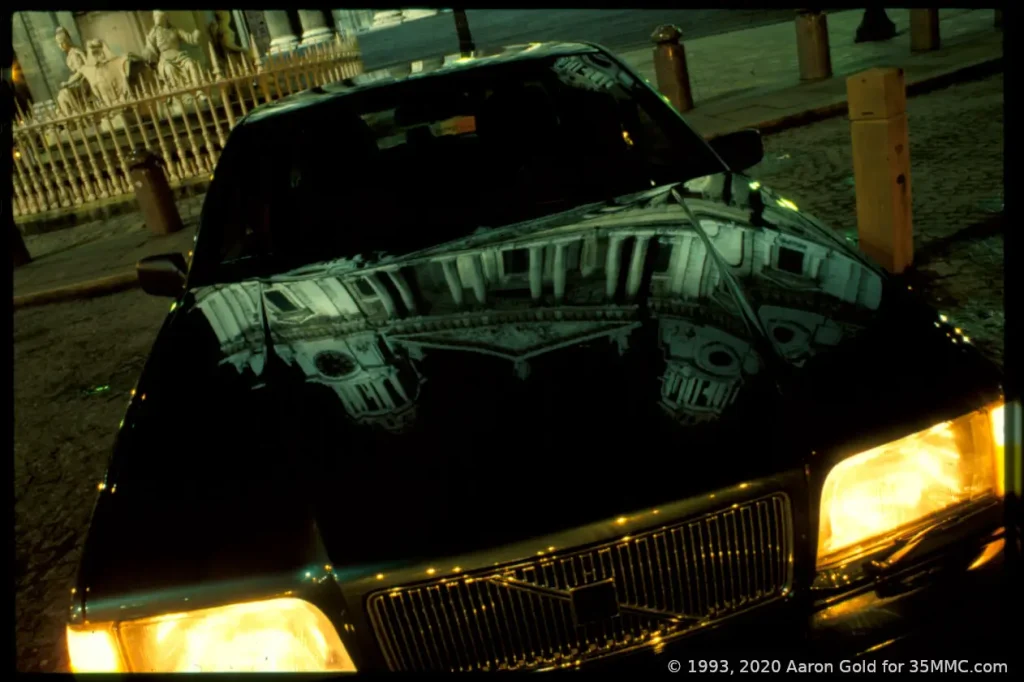
That said, I also didn’t realize all the things the KX didn’t (and still doesn’t) do well. I didn’t realize how heavy it was compared to some other cameras—1 lb 13 oz (828g) with a 50 mm lens and no strap or film. That’s nearly 5 oz (129g) heavier than my Penatx MX with the same lens. I only realized what an anvil the KX is when I finally started using the bantamweight MG.
I didn’t see a problem with the way the winder lever has to be pulled out to the “stand off” position to turn on the meter, but I’ve since learned that for people who shoot with their left eye, the lever pokes them in the forehead. (That’s what you get for being a nonconformist.)
The one thing I did miss was an automatic exposure mode, though I would never admit that in public. (Manly men shoot manual!) I knew there were shots I was missing or botching because it took me too long to set the exposure. So I learned to set it faster.
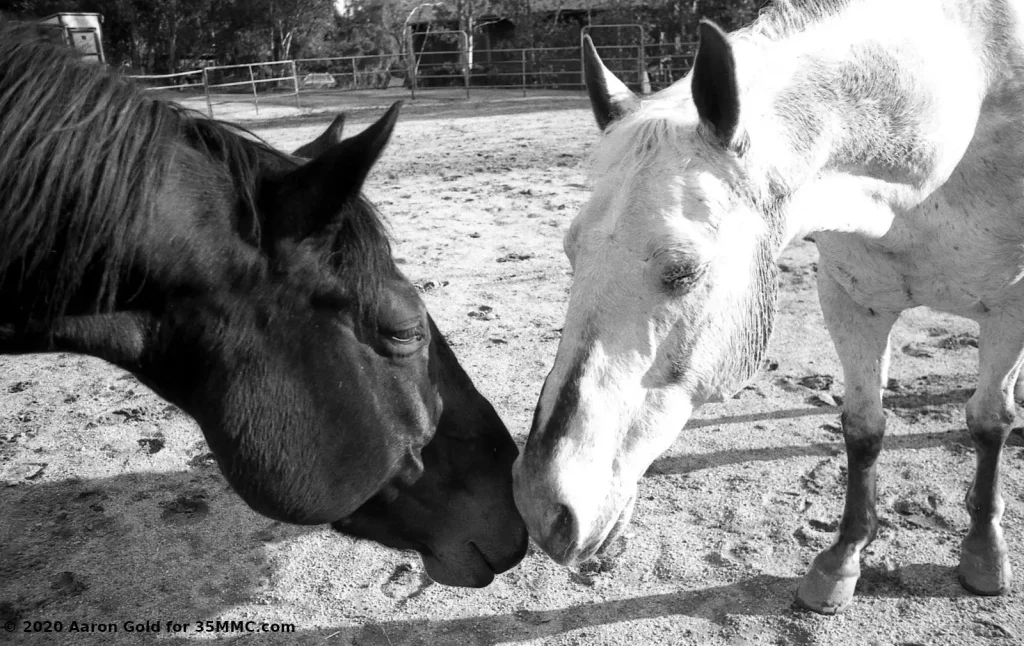
Oh, and I was aware of how loud it was. For candid street photography—hell, that was before we even called it street photography—I had to use my Pentax PC35AF (a camera that went bzzzt, but at least it kept quiet about it).
But mostly, I never realized how damn good the KX feels to use. I figured that out a decade or so later when I bought my next SLR, a Canon EOS Rebel 2000—an SLR that went BZZZT. I was impressed with my friend Heather’s Rebel, where you just dialed up the green box and snapped away, so I bought my own. I didn’t realize it at the time, but that was the beginning of my falling out of love with photography, a trend that wouldn’t reverse itself for many, many years.

Fast-forward to today. Film photography is back, but the film photography world has changed. All those cameras that go BZZZT, even the ones I couldn’t even afford to look at in the stores—cameras that are thirty years old but still seem brand new and high-tech to me—are selling for peanuts, while mechanical cameras like my KX are the expensive ones. People are afraid of electronics, which they need not be (a topic I hope to explore in future reviews). Everything has gone topsy-turvy, and that has allowed me to acquire an armada of cameras at next to no cost, nearly all of them newer and more sophisticated than my Pentax KX.
And yet the KX remains a constant.
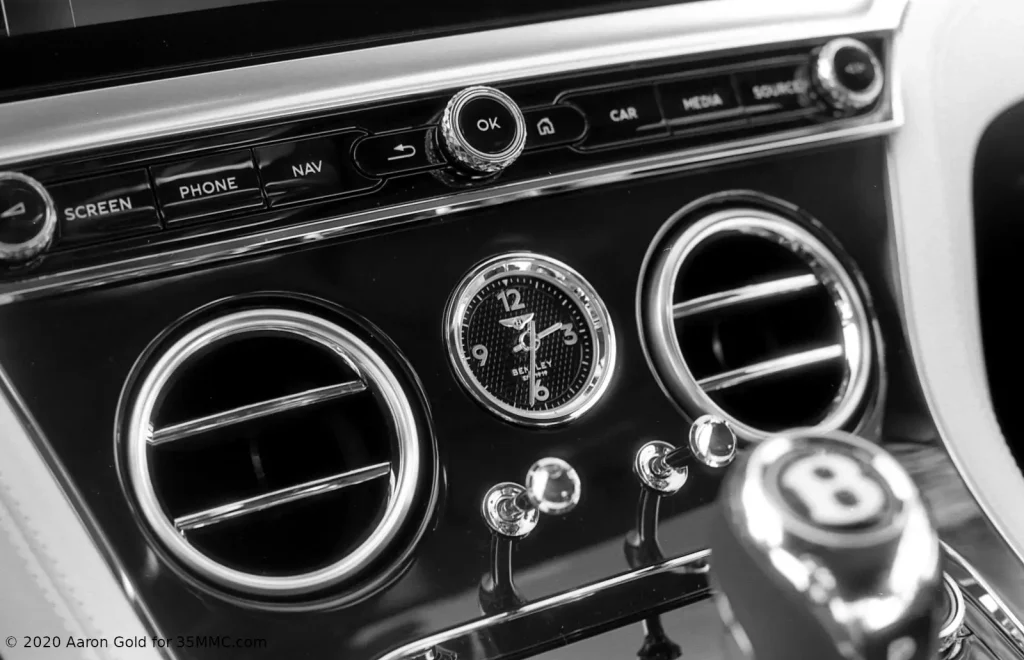
It’s still a damn good camera to shoot with. It still has among the most intuitive controls of anything I’ve used. It’s still got the features it needs to help a halfway-decent photographer like me make good photos.
It’s still reliable. It’s still robust. It still lacks an automatic mode.
It’s got a few more dings and scratches than it had in 1991, and a lot of brass showing beneath worn-off paint—marks that I once thought looked shabby but that I now regard with pride, mementos of all that the KX and I have done and seen and recorded together.
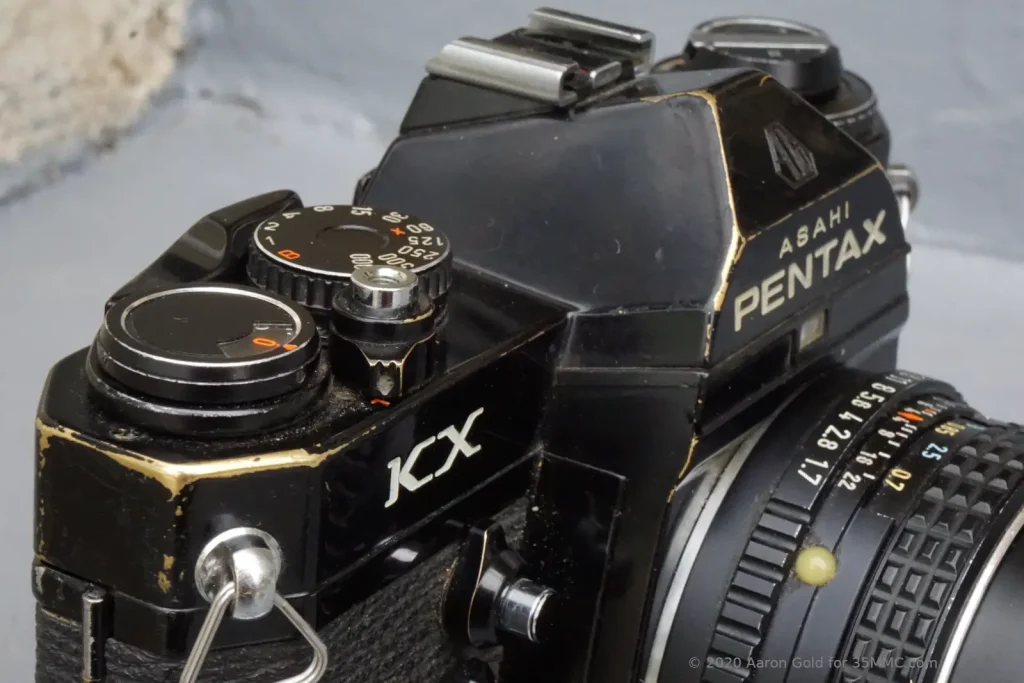
And now it’s the camera I want everyone to use. Back in 1993, if I asked a Nikon F4 owner if he wanted to try my KX, I’m sure he’d glare at me with disdain. (Forgive me for using the male pronoun, but I’ve met plenty of disdainful Nikon users and all were male.) Today, I think many owners of BZZZT cameras would love a chance to try my old KX, and maybe it’s their F4 they’d glare at with disdain.
Yes, I love my KX because it’s my first—but I also love it because it’s a great camera, and one I freely recommend to anyone who will listen. The KX isn’t the best-known Pentax SLR, and it’s regarded as a lesser light than the MX and LX, so that helps keep prices reasonable. It’s a camera that requires you to know your craft, and will do all it can to help you hone your skills.
I don’t think I’m exaggerating when I say the KX is the camera that made me the photographer I am. I only wish my grandfather was around to know that I would own it—and to see what his KX and I would do together over the next twenty-nine years.
I know now how lucky I am to have started with a Pentax KX.
And I’m damn glad my grandfather didn’t buy an AE-1!
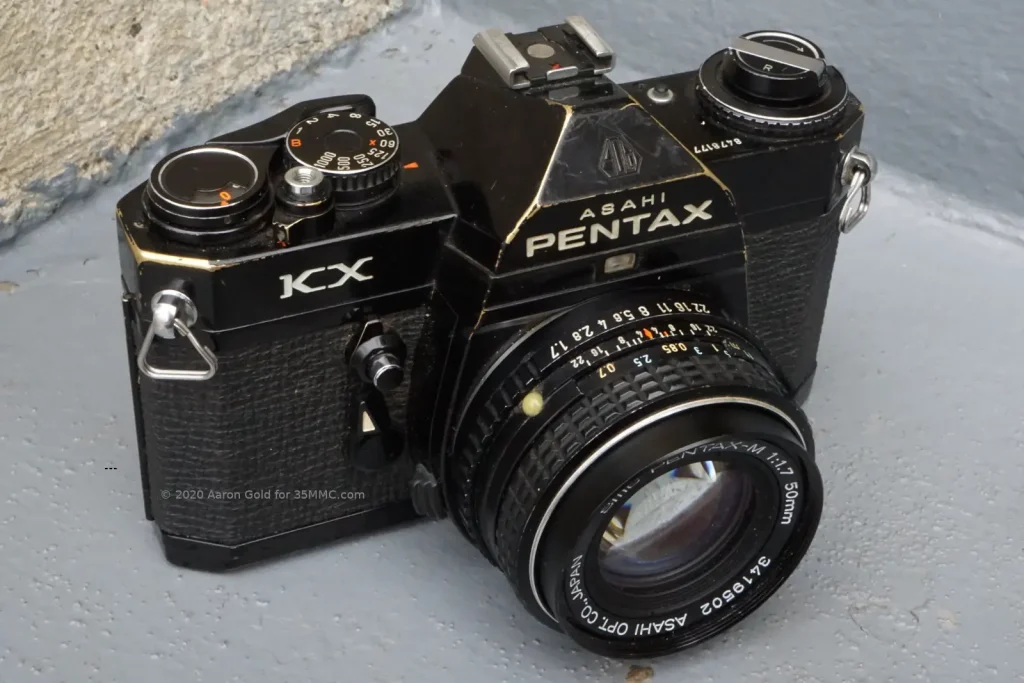
© 2020 Aaron Gold
Share this post:
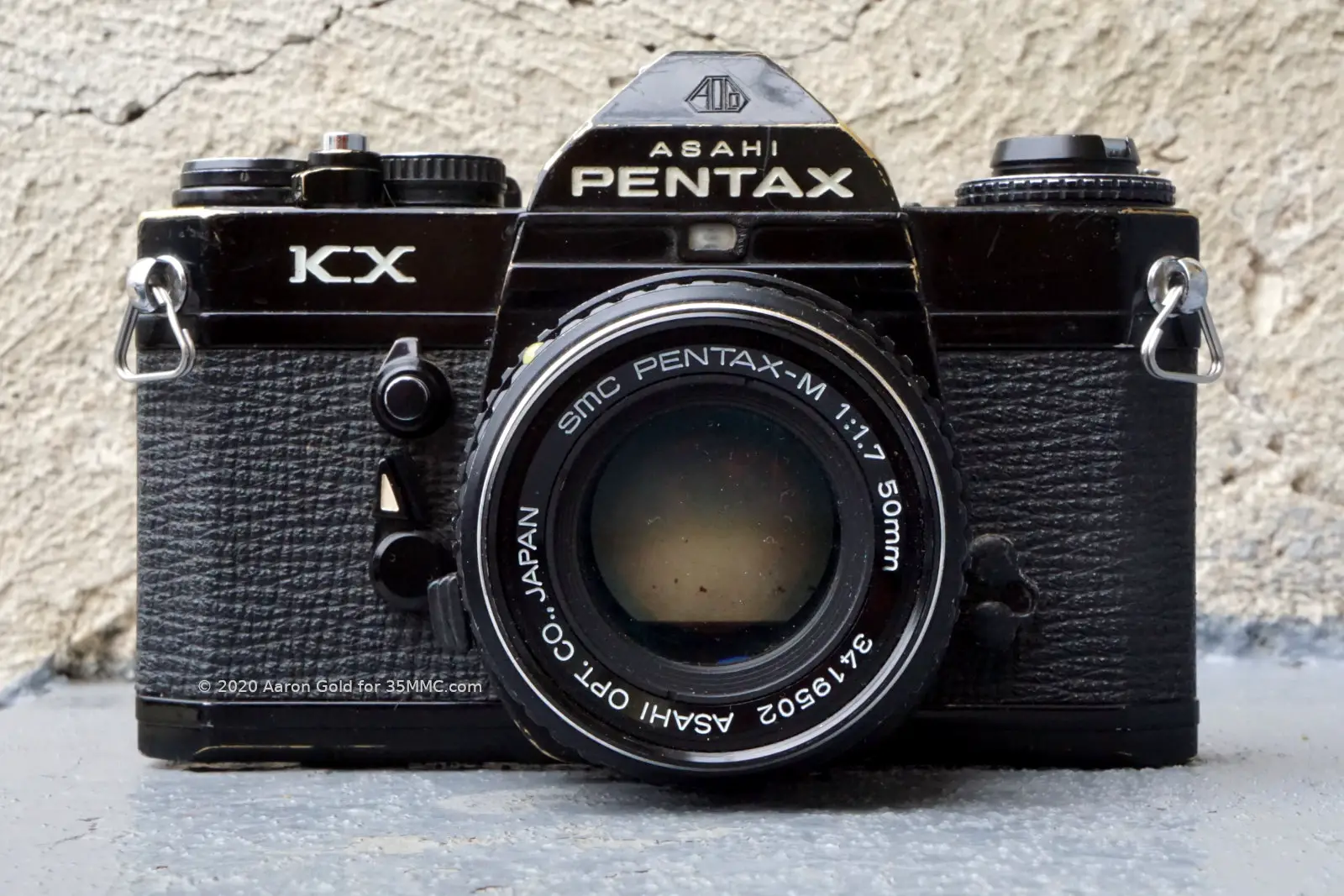








Comments
Rock on Pentax KX review: My first. My favorite? – by Aaron Gold
Comment posted: 28/02/2020
Andy Collins on Pentax KX review: My first. My favorite? – by Aaron Gold
Comment posted: 28/02/2020
Andy
Roger B. on Pentax KX review: My first. My favorite? – by Aaron Gold
Comment posted: 28/02/2020
Sciolist on Pentax KX review: My first. My favorite? – by Aaron Gold
Comment posted: 28/02/2020
The finest feeling winder is of course the one on the Pentax ME Super, although mine has recently began to suffer the dreaded intermittent 'missed cog', and so failure to wind on. And after only 35 years of use. Pfft. I was robbed.
eric on Pentax KX review: My first. My favorite? – by Aaron Gold
Comment posted: 29/02/2020
Ohhhhh so nice to have fresh air...
Written in a humble way ... love it
mike marks on Pentax KX review: My first. My favorite? – by Aaron Gold
Comment posted: 05/03/2020
Nikomat FT2 review: Because photography isn't complicated enough - by Aaron Gold - 35mmc on Pentax KX review: My first. My favorite? – by Aaron Gold
Comment posted: 13/03/2020
Ricoh KR-10 review - Kosmo Foto on Pentax KX review: My first. My favorite? – by Aaron Gold
Comment posted: 15/03/2020
Dan Marinelli on Pentax KX review: My first. My favorite? – by Aaron Gold
Comment posted: 10/04/2020
Nikon N8008/F-801 review: The perfect photographer's assistant? - Kosmo Foto on Pentax KX review: My first. My favorite? – by Aaron Gold
Comment posted: 03/05/2020
Bob Janes on Pentax KX review: My first. My favorite? – by Aaron Gold
Comment posted: 20/07/2020
1970s Istanbul on a Pentax KX - Kosmo Foto on Pentax KX review: My first. My favorite? – by Aaron Gold
Comment posted: 30/10/2020
Rich Stroffolino on Pentax KX review: My first. My favorite? – by Aaron Gold
Comment posted: 30/10/2020
Philip D Knudsen on Pentax KX review: My first. My favorite? – by Aaron Gold
Comment posted: 25/11/2020
Thanks for the story. BTW - I bought the K2DMD body at Hirsh photo back in 1975-76 somewhere in there .... I worked on a daily paper at a large state University ... those cameras made me enough money to pay rent. I could always find a darkroom on campus (after taking some photo classes, but I'd been working in a darkroom for 5 or 6 years at that point!
Pentax ME Super review - Kosmo Foto on Pentax KX review: My first. My favorite? – by Aaron Gold
Comment posted: 20/12/2020
Bob Janes on Pentax KX review: My first. My favorite? – by Aaron Gold
Comment posted: 08/06/2025
So you don't see the aperture, even with K-mount SMC Pentax lenses? Do you see anything where the aperture should be showing? I'm left wondering if your camera might actually be a KM, but with a KX top-plate. Have you ever had the top plate off to see if the Aperure-Direct stuf is on the pentaprism?
Aaron Gold on Pentax KX review: My first. My favorite? – by Aaron Gold
Comment posted: 08/06/2025
Annnd, there are more differences between the KX and the KM than the top plate -- meter display is completely different, ASA is set on a different dial, the shutter release mechanism is different (KX has a lock and a meter switch, KM has neither), and the KX has a mirror lock-up integrated with the DOF preview switch on the front. They are very different cameras; KM was basically a Spotmatic F with a new mount. My camera is definitely a KX.